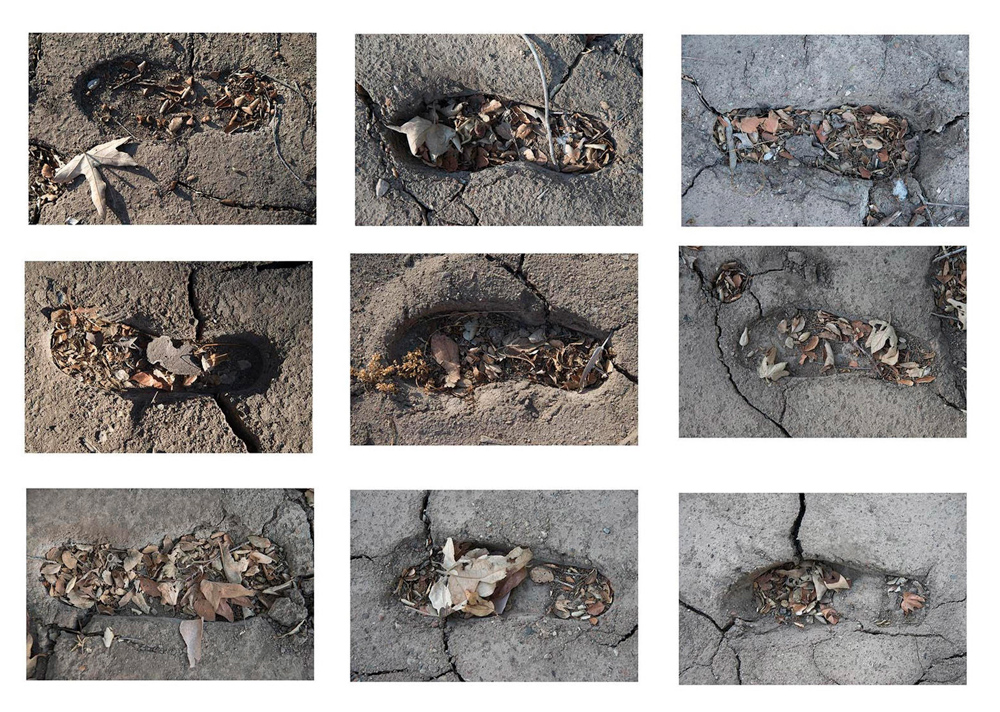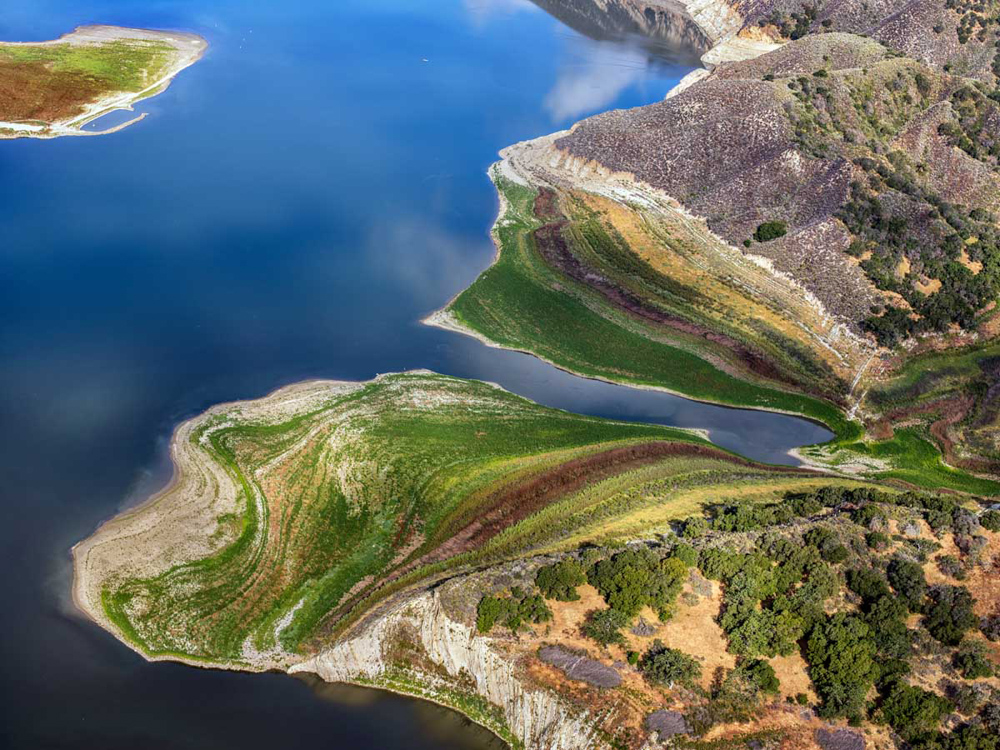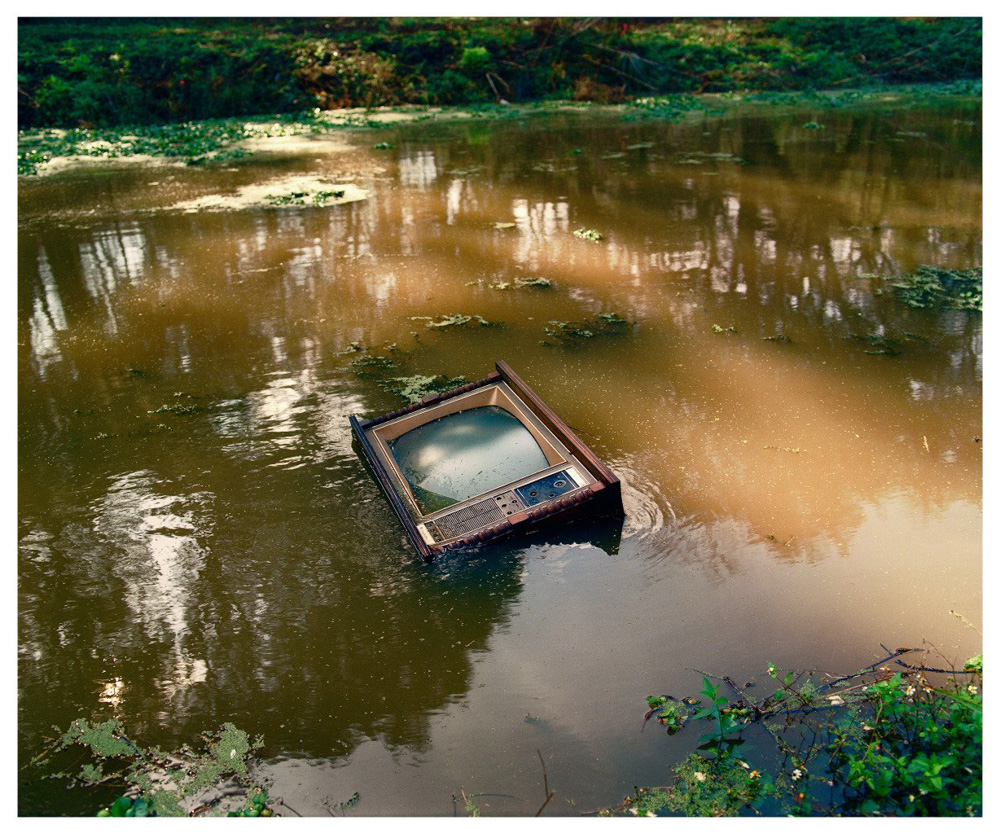Westmont Photo Show Finds Beauty in People-Planet Tensions
The Exhibit Coincides with 1/9 Debris Flow, 1969 Oil Spill Anniversaries

Ansel Adams landscapes they are not. Full of tension and uncertainty, the nature photographs that hang in the Westmont Ridley-Tree Museum of Art instead reflect an increasingly fraught relationship between humankind and the environment. “We didn’t go for pretty images,” said museum director Judy Larson. “We went for emotional reaction.”
Sometimes, the conflict is obvious, as in the documentary-style photograph by Elaine Mayes of a lightning bolt piercing the New York skyline. Or in the darkly whimsical composite created by Anthony Goicolea of a once-calm ocean cove soiled by industry. Other times, the impact of people on nature is less obvious. Jerry Siegel’s panoramic print, for instance, depicts a starkly beautiful piece of rural Alabama that hides a history of plantation slave labor.
The bulk of the exhibit — titled Watershed: Contemporary Landscape Photography — is on loan from the Telfair Museum in Georgia and explores countrywide themes of sustainability, development, and climate change. “It’s really a showcase of shared issues,” said Larson. “From the East Coast to the West Coast, from the Midwest to the South, it asks us to pay attention and get involved.” Larson also decided to feature the work of Santa Barbara photographers, who’ve recorded the region’s inescapable connection to droughts, fires, and floods.
The show opened January 10, a year and a day since Montecito was ravaged by a deadly debris flow and just two weeks before the 50th anniversary of the 1969 oil spill. It coincides as well with the launch of Westmont’s new environmental studies minor this fall and a number of upcoming art- and environmental-related events. For details, visit westmont.edu.
The Independent spoke with two Santa Barbara photographers and emailed a Southern-based artist about their “Watershed” works. The captions with each image are condensed versions of our conversations.




